Like with a lot of its cuisine, Filipino street food is mostly shown from suffering. As a inhabited nation, exclusive and valuable meats were very expensive and challenging to buy, imposing the use of the reasonably priced and less desirable parts of the animal.
It is an indication to the compliance and ingenuity of the Filipino people that these parts have been turned into some of the most delicious and most affordable bites of food.

street food Philippines
Filipino street food, much like the broader spectrum of Filipino cuisine, emerges from a history of resourcefulness and resilience. In a nation where access to exclusive and premium cuts of meat was limited and often prohibitively expensive, necessity birthed creativity. It is within this context of scarcity that Filipino street food finds its roots, transforming humble and often overlooked parts of the animal into delectable culinary treasures.
For generations, Filipinos have demonstrated a remarkable ability to make the most of what they have, turning adversity into opportunity. The streets of the Philippines became the stage upon which this culinary ingenuity unfolded, as vendors and home cooks alike crafted dishes that not only satisfied hunger but also celebrated the flavors of the nation.
From the bustling markets of Manila to the remote corners of the countryside, Filipino street food has become an integral part of everyday life. It is a reflection of the Filipino spirit—resilient, resourceful, and ever-adaptable. What began as a means of survival has evolved into a vibrant culinary tradition, celebrated by locals and sought after by visitors from around the world.
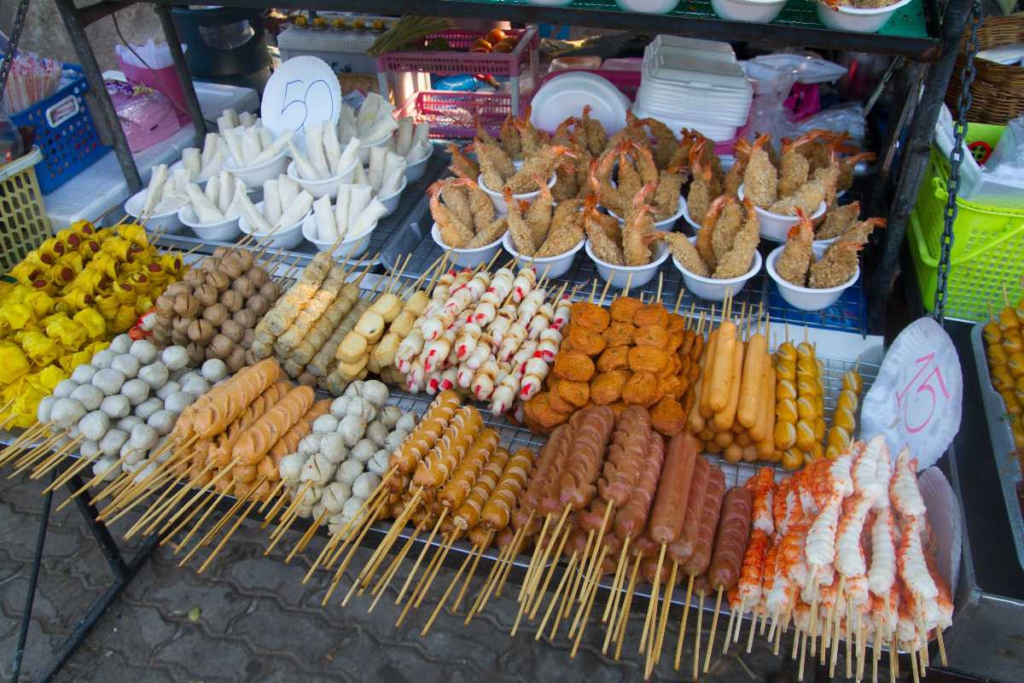
But Filipino street food is more than just a testament to the resilience of the Filipino people; it is a celebration of community and culture. In every sizzle of the grill and every scoop of sauce, there is a story—a story of shared meals, shared experiences, and shared laughter. It is a reminder that food has the power to bring people together, bridging gaps and forging connections that transcend language and borders.
As we embark on this culinary journey through the streets of the Philippines, let us not only savor the flavors but also appreciate the stories behind each dish. From the savory delights of isaw to the sweet indulgence of halo-halo, every bite tells a tale of tradition, innovation, and the enduring spirit of Filipino cuisine. So come, join us as we explore the culinary tapestry of Philippine street food—where every flavor is a revelation and every meal is a celebration of life.
Filipino street food is not merely about sustenance; it is a cultural phenomenon deeply rooted in the fabric of Filipino society. It is an expression of identity, a reflection of history, and a celebration of diversity. Each dish tells a story of migration, colonization, and the blending of cultures that have shaped the Filipino culinary landscape.
A Multisensory Extravaganza
Traversing the labyrinthine streets of Manila, Cebu, or any bustling Philippine metropolis, one is greeted by an olfactory symphony that dances through the air. The tantalizing scent of grilling meats permeates the atmosphere, mingling with the fragrant spices that infuse the culinary landscape. Here, the aroma of succulent barbecue skewers, lovingly saturated in a medley of secret marinades, entices passersby, while the sweet fragrance of freshly fried delicacies beckons from nearby stalls. It’s a multisensory experience where sight, smell, and sound converge to paint a vivid display of culinary delight.
Savouring the Street Food in Philippines
At the heart of Philippine street food culture lies a rich tapestry of flavors, each bite a symphony of tastes and textures.
From savory delights to sweet indulgences, Filipino street food offers a culinary journey like no other. Here are the top 8 Philippines street foods to try that will tantalize your taste buds and leave you craving for more:
Top 8 Best Street Foods in the Philippines: A Gastronomic Adventure
The Philippines, a melting pot of cultures and flavours, boasts a vibrant street food scene that captivates both locals and wanderers alike. From savoury delights to sweet indulgences, Filipino street food offers a culinary journey like no other
1. Isaw
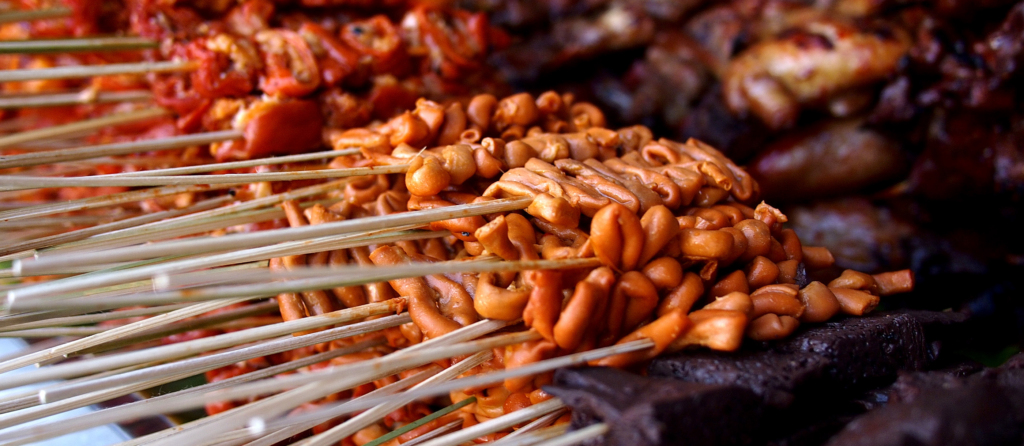
Source: Isaw – street food Search (bing.com)
Grilled Chicken Intestines: A quintessential Filipino street food, isaw is skewered chicken intestines grilled to perfection over hot coals. Marinated in a blend of spices and vinegar, these savory treats are crispy on the outside and tender on the inside, offering a burst of flavor with every bite.
2. Balut
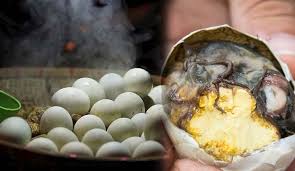
Source: Balut – street food Search (bing.com)
Fertilized Duck Egg: Brave the exotic with balut, a fertilized duck egg boiled and enjoyed with a sprinkle of salt and vinegar. Despite its intimidating appearance, balut is a beloved delicacy in the Philippines, prized for its rich flavor and creamy texture.
3. Adidas
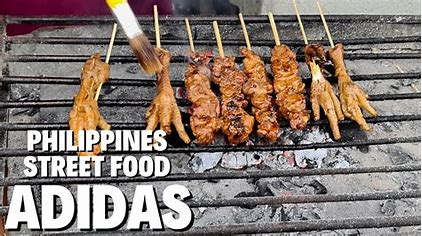
Source: Adidas – Street food Search (bing.com)
Grilled Chicken Feet: Adidas, or grilled chicken feet, is a popular street food choice for its unique texture and bold flavor. Marinated in a tangy sauce and grilled to perfection, adidas offers a crunchy delight that’s sure to satisfy adventurous palates.
4. Fish balls
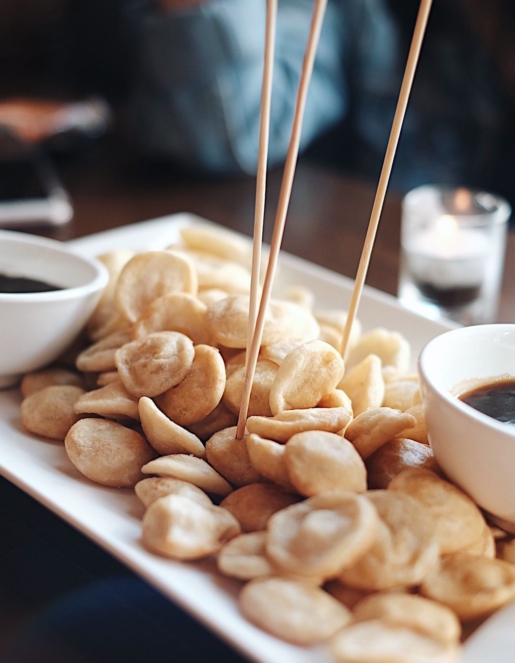
Source: fishball street food- Search (bing,com)
Fish balls are bite-sized orbs of ground fish meat, deep-fried to crispy perfection and served with a sweet and tangy sauce. These addictive snacks are a staple of Filipino street food culture, often enjoyed as a quick and satisfying snack on the go.
5. Kwek kwek
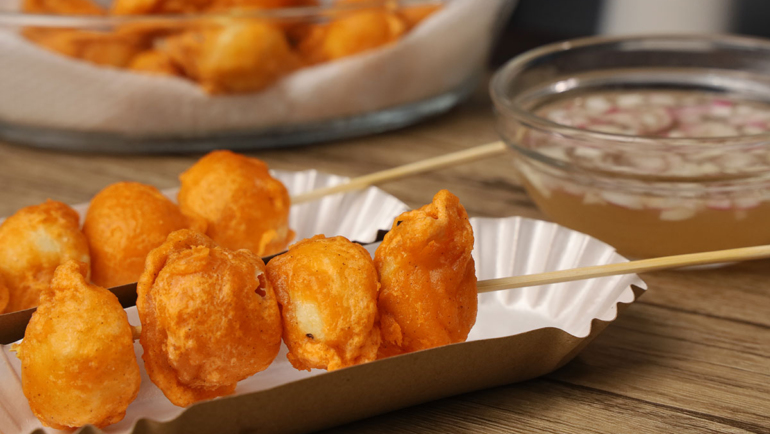
Source: kwek kwek street food – Search (bing.com)
Quail Eggs in Orange Batter: Kwek-kwek features boiled quail eggs coated in an orange-colored batter made from flour and water, then deep-fried until crispy. Served with a vinegar-based dipping sauce, kwek-kwek is a popular street food choice known for its crunchy exterior and soft, flavorful interior.
6. Banana Cue
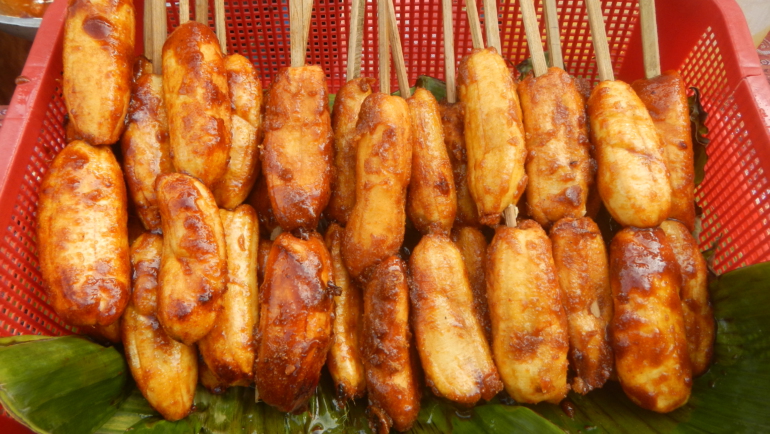
Source – banana cue – street food (google)
It is a beloved Filipino street food made from ripe saba bananas skewered, coated in caramelized brown sugar, and deep-fried until golden and caramelized. This sweet and sticky treat is a favorite among locals and visitors alike, perfect for satisfying cravings for something sweet and indulgent.
7. Halo-halo
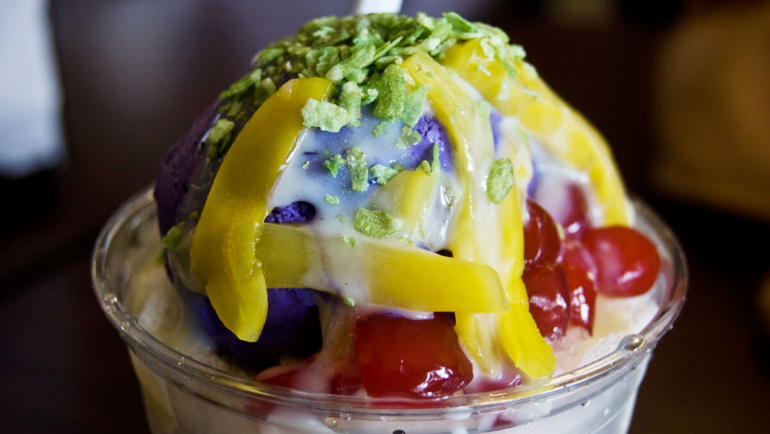
Source: Search (bing.com) – street food – halo halo
Mixed Shaved Ice Dessert: Cool off with halo-halo, a refreshing Filipino dessert made with shaved ice, sweetened beans, fruits, and various toppings like leche flan, ube, and coconut strips. Topped with evaporated milk and ice cream, halo-halo is a colorful and indulgent treat perfect for hot summer days.
8. Puto Bumbong
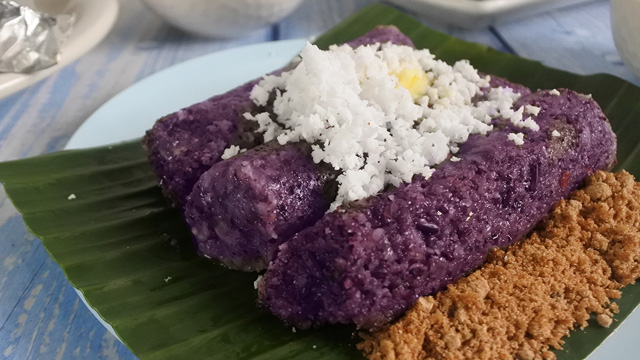
Source: Search (bing.com) – putobumbong – street food
is a traditional Filipino delicacy that holds a special place in the hearts and palates of Filipinos, especially during the Christmas season. This beloved treat is made from purple glutinous rice that has been soaked overnight and then ground into a fine powder. The ground rice is mixed with water to form a thick batter, which is then poured into bamboo tubes known as “bumbong” that have been lined with banana leaves.
Other list of street food:
- Lugaw
- Mais
- Kikiam
- Sorbetes (Dirty Ice Cream)
- Tenga ng Baboy (Walkman)
- Turon
- Ukoy (Okoy)
You’ll find street food all over the Philippines, you can’t stroll more than a few meters in many areas of town without sighted something being provided.
However, you do have to consciously select the street food you choose to eat. Some of the street food is not always too clean looking or sanitized. So try to pick street food that looks to be new, and that has a high costs fee, and be more alert with street foods that use water or ice in the ground work. The best spots to eat street food in the Philippines, in my belief, are both local fairs, and really local area streets. Areas in Manila like Quiapo Market and Divisoria Market, are fantastic places to begin, and you’ll find the wealth of Filipino street food to try.
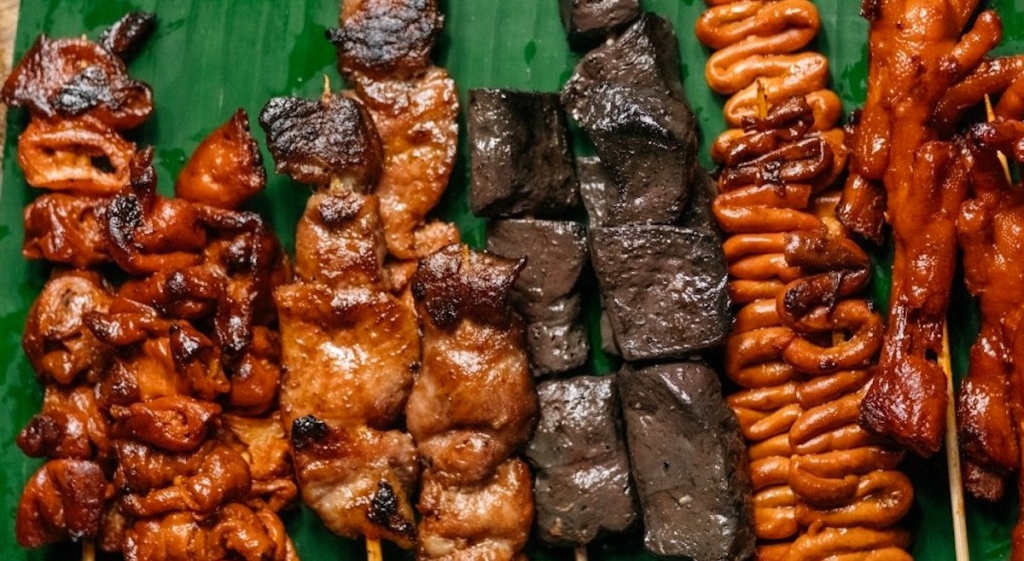
Beyond the Bite
If common home feasting is the pounding heart of Filipino cuisine, then street food is its pathway. Requiring no clarification with outcasts of the ethos, it floods the city’s corners and splits, driving the city’s hard workers and showcases a piece of regular lifecycle: from the whooshing office worker in Makati coating up for a platter of sisig before lunch break finishes, to the Bicolano relocate vending their family’s recipe beside a edge spot.
A Cultural Phenomenon
But Philippine street food is more than just a culinary experience; it’s a cultural phenomenon that brings people together. In every bustling market and busy street corner, vendors and patrons alike share not just food but stories, laughter, and camaraderie. Here, amidst the chaos of the streets, strangers become friends over a shared love for good food and good company.
The Evolution of Filipino Street Food
As cities evolve and cultures intertwine, Filipino street food continues to adapt and innovate. Traditional favourites like balut and betamax are joined by modern twists like gourmet tacos and fusion desserts, reflecting the diverse influences that shape Filipino cuisine. Yet, amidst the ever-changing landscape, one thing remains constant: the spirit of Filipino street food, which transcends borders and unites people in a shared love of good food and good company.
The diversity of Filipino street food reflects the multifaceted nature of Filipino cuisine, which has been shaped by centuries of colonization, migration, and cultural exchange. Spanish, Chinese, Malay, and American influences have all left
their mark on Filipino culinary traditions, resulting in a rich tapestry of flavors, ingredients, and cooking styles.
Chinese-inspired dishes like siomai, steamed dumplings filled with savory meat and vegetables, and lumpia, crispy spring rolls filled with a variety of fillings, have become staples of Filipino street food, beloved by locals and visitors alike for their irresistible flavors and textures.
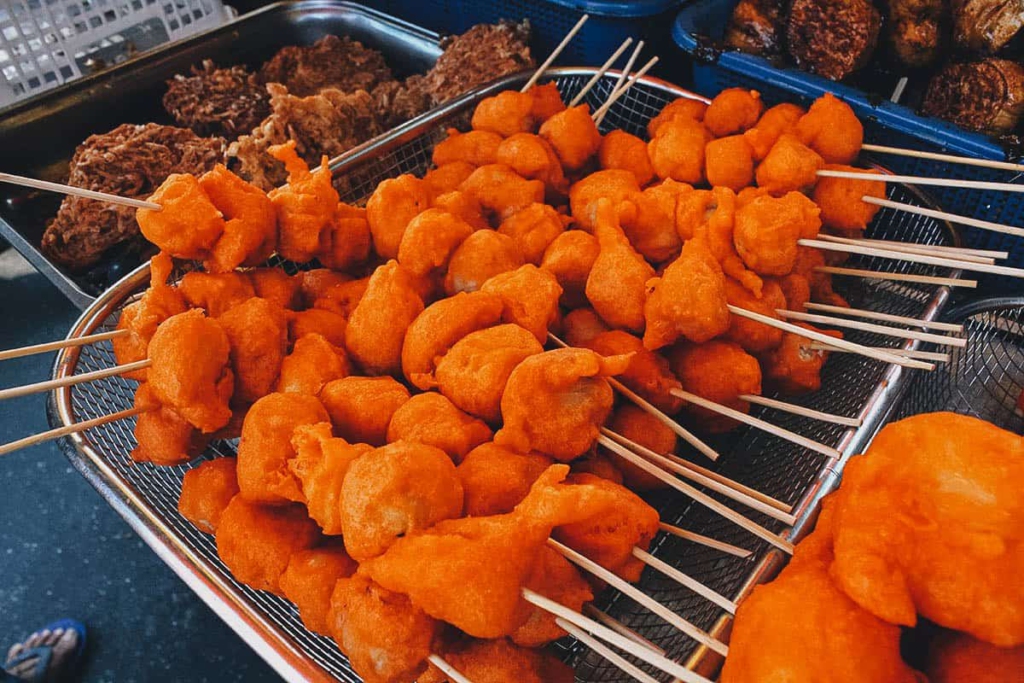
American influences can be seen in dishes like hotdogs and burgers, which have been given a Filipino twist with the addition of unique toppings and condiments like banana ketchup and atchara, pickled green papaya.
Yet, amidst the steadfast presence of traditional favorites, Filipino street food has embraced innovation and adaptation, welcoming new flavors, ingredients, and cooking techniques with open arms. Modern twists on classic dishes have emerged, catering to evolving tastes and preferences while pushing the boundaries of creativity and culinary excellence.
Gourmet tacos filled with sisig, a sizzling dish of chopped pig’s face and ears, offer a contemporary take on a beloved Filipino staple, marrying traditional flavors with international flair. Fusion desserts like halo-halo cheesecake combine the iconic flavors of halo-halo, a popular Filipino shaved ice dessert, with the creamy richness of cheesecake, creating a tantalizing fusion of sweet indulgence and cultural homage.
Preserving Tradition, Inspiring Innovation
In the ever-evolving landscape of Filipino street food, tradition and innovation coexist harmoniously, each influencing the other in a continuous cycle of culinary creativity. While classic street food favorites like fish balls and banana cue remain steadfast in their popularity, vendors and food entrepreneurs are constantly experimenting with new ingredients, flavors, and cooking techniques to keep pace with changing tastes and preferences.
This dynamic fusion of tradition and innovation is exemplified by dishes like adobo rice bowls served from food trucks and gourmet twists on classic snacks like gourmet taho with artisanal toppings. These modern interpretations pay homage to traditional flavors and techniques while offering a fresh and exciting culinary experience for adventurous food enthusiasts.

These symbolizes the stories of battle, persistence, and a nation’s awareness, all experiencing place within the gaps of the metro with which its locals reside and live out their daily reality. And as cities such as Metro Manila remain to redefine the constraints of period and place, formed by constantly altering features, street food will be there to fill the tummies of its developing area.
But Philippine street food is more than just a culinary experience; it’s a cultural phenomenon that brings people together. In every bustling market and busy street corner, vendors and patrons alike share not just food but stories, laughter, and camaraderie. Here, amidst the chaos of the streets, strangers become friends over a shared love for good food and good company.
As the sun sets and the city comes alive with twinkling lights and bustling crowds, the allure of Philippine street food only grows stronger. It’s not just about satisfying hunger; it’s about embracing a way of life—one filled with flavor, excitement, and endless possibilities. So the next time you find yourself wandering the streets of the Philippines, don’t just walk—immerse yourself in the culinary tapestry of Philippine street fare. Your taste buds will thank you.
